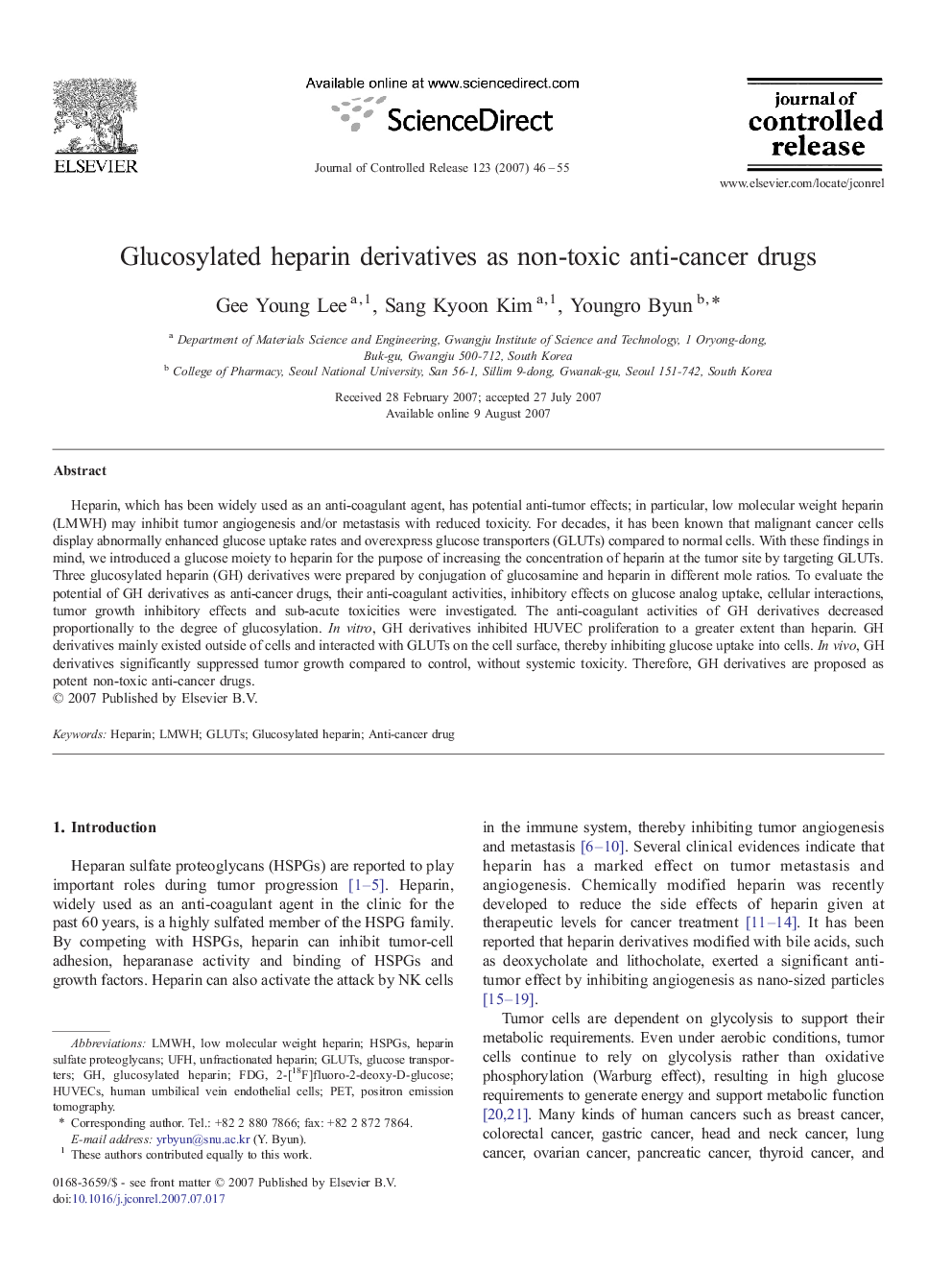| Article ID | Journal | Published Year | Pages | File Type |
|---|---|---|---|---|
| 1427057 | Journal of Controlled Release | 2007 | 10 Pages |
Abstract
Heparin, which has been widely used as an anti-coagulant agent, has potential anti-tumor effects; in particular, low molecular weight heparin (LMWH) may inhibit tumor angiogenesis and/or metastasis with reduced toxicity. For decades, it has been known that malignant cancer cells display abnormally enhanced glucose uptake rates and overexpress glucose transporters (GLUTs) compared to normal cells. With these findings in mind, we introduced a glucose moiety to heparin for the purpose of increasing the concentration of heparin at the tumor site by targeting GLUTs. Three glucosylated heparin (GH) derivatives were prepared by conjugation of glucosamine and heparin in different mole ratios. To evaluate the potential of GH derivatives as anti-cancer drugs, their anti-coagulant activities, inhibitory effects on glucose analog uptake, cellular interactions, tumor growth inhibitory effects and sub-acute toxicities were investigated. The anti-coagulant activities of GH derivatives decreased proportionally to the degree of glucosylation. In vitro, GH derivatives inhibited HUVEC proliferation to a greater extent than heparin. GH derivatives mainly existed outside of cells and interacted with GLUTs on the cell surface, thereby inhibiting glucose uptake into cells. In vivo, GH derivatives significantly suppressed tumor growth compared to control, without systemic toxicity. Therefore, GH derivatives are proposed as potent non-toxic anti-cancer drugs.
Keywords
Related Topics
Physical Sciences and Engineering
Materials Science
Biomaterials
Authors
Gee Young Lee, Sang Kyoon Kim, Youngro Byun,
